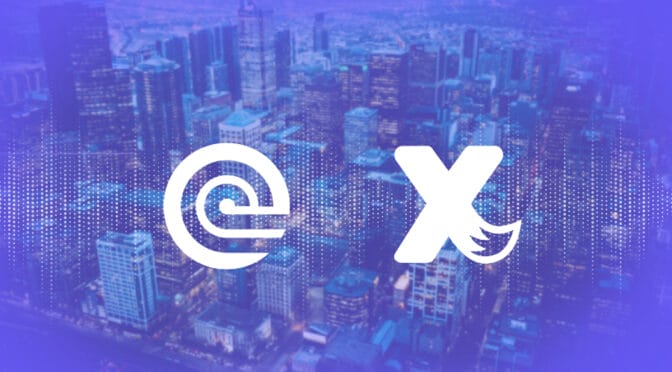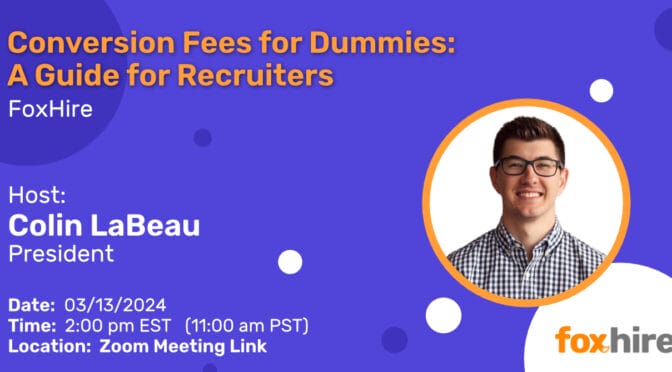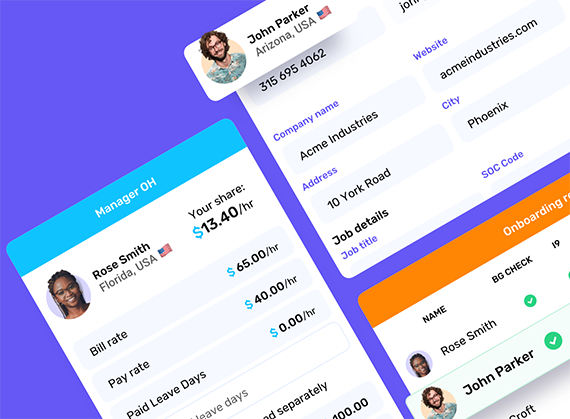Staffing firms, gig platforms, and contingent workforce solutions play vital roles in today’s healthcare landscape, bridging the gap between employers and healthcare professionals. One scenario these groups are beginning to encounter is the need to convert independent contractors (IC), often classified as 1099 workers, into W2 employees. While this transition can offer various benefits for both parties involved, it’s essential to navigate the process with care and attention to legal and administrative considerations. This free white paper can walk you through the process step by step. However, in this report, we’ll explore what staffing firms need to know when converting 1099 contractors to W2 employees.
What is Driving the Change?
Like many new things in healthcare, the starting point can be derived from some connection to the COVID-19 pandemic. During that time the need for healthcare professionals became so large, that healthcare organizations were turning to almost any option to ensure they were properly staffed. Due to the overwhelming need, they were accepting of non-traditional models such as gig-platforms, and 1099 independent contractors. According to Tom Daschle, former senate majority leader, and current CEO of the Daschle Group, “Prior to the pandemic, most temporary nurses and nurse aides were traditional W-2 employees. Today, an estimated 25% of nurses and nurse aides are placed in post-acute facilities as 1099 independent contractors. Further, an estimated 50% of these workers are classified as both, with the worker classification determined only by the staffing platform they used to accept their shift assignment.”, which he shared in this article. So this rise is accounting for roughly 25-50% of the healthcare workforce at this time.
Understanding the Difference: 1099 Contractors vs. W2 Employees
Before delving into the conversion process, it’s crucial to understand the distinction between 1099 contractors and W2 employees. 1099 contractors are considered self-employed individuals or independent contractors who work on a project or contract basis. They typically have control over how they perform their work and are responsible for their own taxes, insurance, and benefits.
On the other hand, W2 employees are individuals who work for an employer on a permanent or long-term basis. They are subject to the employer’s direction and control regarding their work and are entitled to various benefits and protections, including overtime pay, workers’ compensation, and unemployment benefits.
There is an ongoing debate on whether healthcare workers, specifically nurses, should be able to be considered independent contractors (1099) at all. A recent ruling from the Department of Labor attempted to clarify this, but many have voiced that their new rules only confuse the issue further. Most of the feedback on this came from healthcare gig platforms as well, which aim to leverage the 1099 model in order to launch and scale their gig platforms quickly. This also allows gig platforms, and staffing firms for that matter, to keep their employer costs extremely low. This enables them to provide higher pay rates to candidates and lower bill rates to clients. This edge enables them to deliver very competitive rates on each side of the staffing marketplace. This type of pricing strategy has enabled a massive boom in gig platform growth, and enabled the entrance of thousands of smaller staffing firms into the market since the start of the COVID-19 pandemic.
Why Make the Switch to W2?
The question becomes, why would these platforms or staffing firms make the switch to W2 if the independent contractor model is so competitively advantageous? There are a few main drivers slowly forcing the move from 1099 to W2 in today’s market. We review those reasons below.
1. Regulation:
There are a few different regulatory movements happening in today’s market that are putting pressure on staffing firms and gig platforms.
- Department of Labor Ruling: The first is the direct ruling and focus on 1099 employment from the Department of Labor. They have recently made a ruling on the classification of healthcare workers and other independent contractors. This focus drives many agents in their offices to look for misclassification efforts by staffing firms and platforms in order to enforce their rulings. Seeing the consistent stories of fines and penalties happening due to this enforcement from the DOL is putting pressure on firms to make the change.
- Healthcare Staffing Agency Licensing: The second is the rise in state agency licensing requirements. Over the past 4 years roughly 23 states have launched the requirement for healthcare staffing agencies to carry licenses. This adds a second layer of scrutiny for many firms that requires them to follow certain mandates depending on which states they operate in.
2. Client Pressure:
Although many clients are benefiting from lower rates coming from staffing firms and gig platforms that operate an IC model, they are also growing concerned about regulation. Many clients are driving their vendors to be 100% compliant, and this now includes IC compliance. As the client holds the “keys to the kingdom,” many vendors are finding they cannot sell their IC model as well as they used to, as clients are more aware of the ongoing issues surrounding IC compliance. Therefore they are demanding their vendors offer a W2 model.
3. MSP/VMS involvement:
Building on “client pressure” is the involvement of Managed Service Providers (MSP) and Vendor Management System (VMS) vendors. These vendors are hired by clients of staffing services in order to manage their vendor pools. This includes traditional staffing firms and newer gig platforms. Due to their role in ensuring compliance, the MSP and VMS vendors are now requiring all of their vendors to offer W2 employment and carry full certificates of insurance (COI). Many vendors offering IC models fail those two requirements and are being shut out of working with clients that use MSP and VMS vendors. Therefore, the only way into those client organizations is to switch the model to W2 and obtain a COI.
Factors to Consider When Converting Contractors to Employees
Before making the switch from independent contractor to W2, staffing firms and platforms need to carefully consider the implications of this change. We review some of the most important things to consider below.
- Legal Compliance: When transitioning contractors to employees, staffing firms must ensure compliance with federal, state, and local labor laws. This includes adhering to regulations related to minimum wage, overtime pay, employment taxes, and worker classification. Misclassifying workers can lead to severe penalties and legal repercussions, so it’s essential to consult with legal experts to ensure compliance.
- Employee Benefits: W2 employees are entitled to a range of benefits, including health insurance, retirement plans, paid time off, and other perks. Staffing firms and platforms need to consider the costs and logistics of providing these benefits when converting contractors to employees. Part of this equation will be to review and comply with the Affordable Care Act (ACA). ACA requires employers to offer benefits to anyone working over 30 hours per week (20 hours per week in Hawaii). That will be a new cost and concern for staffing firms and platforms to consider.
- Insurance Requirements: One thing all employers must take into account is the need for insurance. That need increases as you take on W2 employees, rather than independent contractors. The main insurance coverage many think about is workers compensation insurance. However, staffing firms and platforms may also need to consider professional liability, medical malpractice, or other coverages to ensure compliance with state and federal laws.
- Tax Implications: Converting contractors to employees can have tax implications for both the staffing firm and the workers. Employers are responsible for withholding income taxes, Social Security, and Medicare taxes from employees’ wages, as well as contributing their share of these taxes. It’s crucial to understand the tax implications and ensure proper tax withholding and reporting. Additionally the employer taxes will become the biggest cost to staffing firms and platforms as they look to understand their margins post IC migration to W2.
- Overtime (OT) and Double Time (DT) requirements: W2 employees are entitled to overtime and double time pay when working over 40 hours per week. Ensuring those calculations are done correctly and that the costs are accounted for in the bill rates to clients is essential to ensuring profitability. Additionally firms and platforms that offer per diem or shift based work will have challenges knowing how to properly bill for OT and DT when candidates are working at multiple locations per week. Many vendors ultimately end up “eating” the cost of those hours when they encounter this requirement to avoid any uncomfortable conversations with clients on how to share in the costs.
How are EORs Playing a Role?
As staffing firms and platforms come to grips with their decision to move from an IC model to a W2 model, many of them realize they may need support. Employer of Record (EOR) platforms like FoxHire offer a turnkey solution solving for all of the issues mentioned above.
- Model: EORs become the legal W2 employer of all the staff members that were previously 1099 and are now switching to W2 employment. In doing so, the EOR assumes all the responsibilities to comply with employment laws, tax regulations, benefits requirements, and more.
- Speed: The main benefit to partnering with an EOR to make this transition is speed. EORs are already set up to handle the requirements of W2. Some EORs, like FoxHire, are completely established across the country in all 50 states, and have an existing infrastructure that can take on these new populations of employees.
- Scale: EORs usually have a large population of employees under management, so their costs are going to be much lower than a firm looking to do W2 employment for the first time. These economies of scale can ease the pain of switching from an IC model to a W2 model, and allow firms to keep their margins as close as possible to what they used to be.
- Technology: Many EOR platforms today have technology that can integrate with the staffing and gig platform vendors, expediting the transition process. The passing of information related to employee info, start dates, timesheets, billing, and more can happen seamlessly, ensuring platforms can still deliver the user experience (UX) their healthcare providers and clients are used to.
- Healthcare Agency Licensing: Some states require staffing firms to be licensed, which imposes heavy burdens and requirements on staffing firms. Partnering with an EOR allows staffing firms to take advantage of the EOR’s already established license. This way they can still offer staffing services, but they can outsource the management of the license and the risk associated with it to the EOR.
Conclusion
Converting 1099 contractors to W2 employees requires careful planning, compliance with legal requirements, and effective communication. By understanding the differences between contractors and employees and addressing key considerations such as legal compliance, employee benefits, tax implications, communication, and retention strategies, staffing firms can successfully navigate the conversion process while fostering positive relationships with their workforce. Ultimately, this transition can lead to greater stability, productivity, and satisfaction for both the staffing firm and its employees.
In summary, converting contractors to employees is not just a legal and administrative process; it’s an opportunity to invest in talent and create a more robust and sustainable workforce for the future. With proper planning and execution, staffing firms can leverage this transition to strengthen their position in the competitive market while meeting the evolving needs of clients and workers alike.





